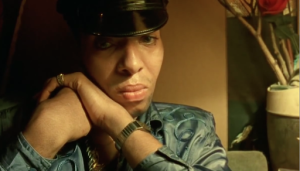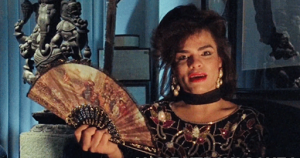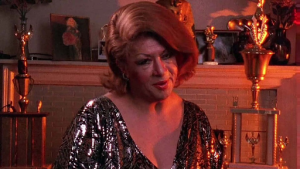12
Paris Is Burning (1990): Oppression of Minorities
By Leonardo Morales
I was drawn to the film Paris Is Burning because it is about the ball culture of New York, which still remains present to this day in modern queer culture. This film serves as a time capsule for the discrimination the LGBT and black youth of New York had to deal with in the 1980s. Their race and orientation is shown to be the primary factors leading to their inability to rise through social classes. There has been a huge change in the dynamics of LGBTQIA+ representation since the time that this film was released, yet many of the dilemmas faced by queer youth in Paris is Burning remain throughout the U.S. and other countries around the world. The film deals mainly with the concepts of ball culture but throughout the film, you can see how ball culture was a reflection of gay and black oppression in the U.S.
The film Paris Is Burning revolves around the life of various homosexual and transgender individuals who attend the ball of New York. Balls are essentially dance halls mixed with runway fashion aesthetics where people compete to see who can achieve the most “realness” and win a trophy. Realness refers to a contestant’s ability to emulate whatever category is being judged at the ball. There are categories like executive realness where people must strive to be the most realistic business professional that someone can be even though they are not. The reason these categories are made very obvious as they are rooted within classism. Pepper Labeija, a black drag queen in the film states, “This is white America. Any other nationality that is not of the white set knows this and accepts this till the day they die. That is everybody’s dream and ambition as a minority – to live and look as well as a white person…That is why, in the ballroom circuit, it is so obvious that if you have captured the great white way of living, or looking, or dressing, or speaking, you is a marvel.” In real life people who attended balls were often so poor they could barely afford food and housing. Many people in the film say their misfortune is due to them being gay and black which keeps them in poverty. The resounding sentiment is that ball culture allows the poor, ostracized youth to fantasize and become someone they could only hope to be as the real world was unfair. The film becomes much more serious in these moments where the subjects are explaining their turmoil in the society they exist in. Pepper Labeija is shown in a close-up shot lamenting the state of her social standing along with the rest of her family. The frame is still which breaks away from the handheld perspective the camera often has throughout the film. It creates a serious ambiance with all focus on Labeija and the struggles of marginalized youth

One scene that exemplified the discrimination of gay youth was one of the last scenes showed in the movie which was the death of Venus Extravaganza who was a transgender woman. To preface this it is important to know how the drag scene worked in New York ball culture. People who won balls eventually formed their own groups called “Houses” and were headed by the “House mother”. Houses are families comprised of people who often were rejected by their biological family. Angie Extravaganza was the house mother of the house of Extravaganza. She revealed towards the end of the film that Venus was found strangled under a bed in a hotel. She says that it was most likely by the hands of a disgruntled client as Venus would often escort for cash. What is shocking to hear is Angie’s resolution to this with her saying that it’s just life as a transgender woman in New York: you end up dead. These would be very harsh words to hear given that it seems that people believe and expect transgender women to come up either missing or dead. The film emphasizes these implications with a medium shot of Angie in a dark, moody atmosphere created by the light source shining across her face giving a contrast between her and the dimly lit room.

The concept that whiteness and heterosexuality is a power that gives people the right to better things is an idea that is recited by many of the people involved in this film. The idea that black, gay youth in New York are in poverty and can’t aim for much higher standards of living for themselves is said to be for two reasons. One was the label of homosexuality hovering over all of them while the other was simply being black. The 1980s were a tumultuous time for gender expression and the world was overall much more oppressive back then than it is now. The oppression of gay black people in New York must have felt immense. Dorian Corey, a black drag queen in the film, goes so far as to say that ball culture is the only way that someone who is gay, and especially if they were black, to ever feel as accomplished or as empowered as a straight white person is.

This is a point touched on by author bell hooks in her book “Black Looks” where she says that the drag being portrayed in this film “is totally personified by whiteness. What viewers witness is not black men longing to impersonate or even become like “real” black women but with an idealized fetishized vision of femininity that is white ”(147). Dorian Corey shows this by mentioning how no one was striving to look like the black actress Lena Home; they were striving to look like white actresses such as Marilyn Monroe. The overarching infiltration of whiteness leads to the oppression of minorities along with a prevailing internalized hatred of being a black homosexual.
The nature of this film as a documentary of ball culture lends itself well to showing the real discrimination people faced. Tragedies like Venus’s murder plagued New York along with harassment of gay and black people at the hands of straight citizens. The aftermath of the film being released did lead to some critics believing that the film itself was discrimination towards the people in the movie. In a New York Times article by Jesse Green, he described how Paris Dupree, a drag queen in the film, planned on suing for 40 million dollars believing she was not paid her fair share of the movie’s profit. The settlement was dropped once the attorney saw they all signed a contract that had already decided their pay. The director Jennie Livingston defended her decision stating that her film was a “work of nonfiction” that usually does not pay actors in the first place. Some critics took this as Jennie Livingston profiting off the discrimination of minority groups even though Jennie Livingston was reported to have had difficulties getting the movie funded at all. The book “America on Film” states that “Under white patriarchal capitalism, queer white men were still more readily able to obtain funding for projects than were women and people of color”(Benshoff and Griffin). This could be seen as another factor of discrimination the film faced in production.
bell hooks criticized Livingston’s film for employing what she referred to as an “imperial overseeing position”(151). Furthermore, hooks states that “ By shooting the film using a conventional approach to documentary and not making clear how her standpoint breaks with this tradition, Livingston assumes a privileged location of “innocence” She is represented both in interviews and reviews as the tender-hearted, mild-mannered, virtuous white woman daring to venture into a contemporary “heart of darkness” to bring back knowledge of the natives”(151). The film is controversial in this aspect as some people think it educates injustices faced by black, gay youth while others believe Livingston to be a selfish individual who was looking to make a profit off of others’ suffering. I personally believe Livingston made this film to bring attention to the discrimination of individuals and bring to light the blossoming gay culture of New York, especially since Livingston was a queer individual herself.
The reason I chose this film to analyze is because of how it has become a foundation for the LGBT culture we see today. TV shows such as Rupaul’s Drag Race have taken ideas from ball culture and incorporated it into their show’s premise. Much of the gay lingo used in Paris is Burning is now widespread such as “reading” or “shade” which people don’t even realize originated from the New York drag scene in the 1980s. This film resonates with me as a piece of history portraying how LGBT culture has evolved from being something dark and underground to now being displayed in mainstream media. This film encapsulates a piece of history that may have gone completely unnoticed.
Paris is Burning is a critical piece of LGBT culture showing the injustices faced by gay and ethnic groups in New York. Many of the cast have died since the release of this film but their legacy is immortalized as this film has been included in the United States National Film Registry. The ball culture of the 1980s is no longer as grand as it once was but the impact it had can still be seen in many aspects of gay culture throughout the world. There are still many issues faced by the LGBT community that the film addresses as prejudice continues. The majority of transgender women who are attacked and killed are black. The transgender community still faces discrimination in their everyday lives from people who deem them sub-human. Though the prevalence of homophobia is still entrenched in our society it is important to remember how far along we have come since Paris is Burning. Ball culture was seen as a reflection of gay and black oppression. I believe the LGBT culture of today has grown into being more than just a reflection of oppression and now is taking a strong stand against it.
References
Benshoff, Harry M., and Sean Griffin. America on Film: Representing Race, Class, Gender, and Sexuality at the Movies, John Wiley & Sons, Incorporated, 2009
Green, Jesse. “Paris Has Burned.” New York Times, 18 Apr. 1993, www.nytimes.com/1993/04/18/style/paris-has-burned.html.
hooks, bell. Black Looks Race and Representation. South End Press, 1992.
Paris Is Burning. Dir. Jennie Livingston. Prod. Jennie Livingston and Barry Swimar. Off White Productions, 1990.

